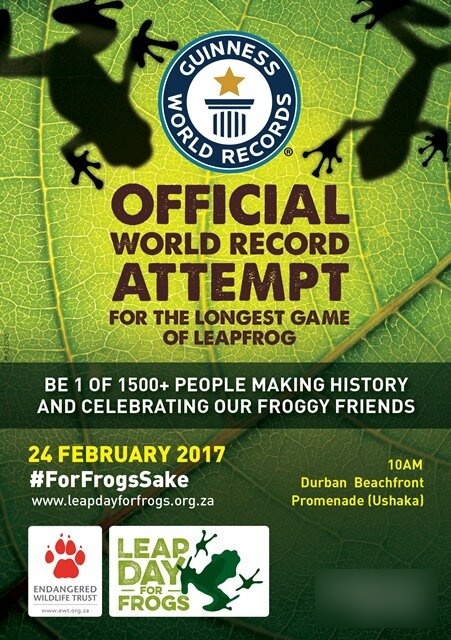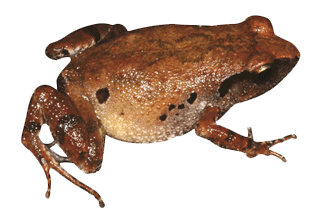
The fourth national awareness day for southern African frogs will be held on
Saturday 25 February 2017
What is the aim of Leap Day for Frogs?
It is one day of the year when ordinary South Africans can take a leap of action and do something to appreciate and protect one of the most threatened group of animals on Earth: Frogs! These important creatures are disappearing all over the planet largely because of habitat destruction.

Why 25 February 2017?
Apart from having tongues 1/3 the length of their bodies, frogs are also famous for leaping across long distances – up to 20 times their own body length in a single leap! The South African Cape River Frog holds the world record for Frog Jumping – the longest distance covered in three consecutive jumps – at 10.3 m? Not bad for a 5 cm frog! And if you think about it, February leaps into March, skipping days 29, 30 and 31 except on Leap years, which occur every four years, adding the 29th of February to the calendar. People born on this day are called “Leaplings”.
Fun froggy facts
• There are 7,620 amphibian species (Feb 1, 2017), of which 6,720 are frogs and toads, 695 are newts and salamanders, and 205 are caecilians. New species are discovered every year, and the total number of species continues to grow. Since 1985 the total number of recognized species has increased by over 60%.
• Not all frogs have tadpoles. There are many terrestrial frog species that emerge as froglets directly from the egg, bypassing the tadpole stage altogether. For example, the Bush Squeaker which occurs in KwaZulu-Natal
• Amphibians are the oldest land vertebrates. Ichthyostega was an amphibian species that lived in Greenland 362 million years ago.
• South Africa’s smallest frog is also one of its most threatened. The appropriately named Micro Frog, which gets up to a maximum length of 18 mm, is Critically Endangered and known only from 4 localities in the southwestern Cape.
• And, our largest species is the Giant Bullfrog which reaches 25 cm and weighs in at 1.4 kg. 80% of this species’ habitat has been lost in urban areas, particularly Guateng.
• Some species only live a few years, but many live 6 or 7 years. The African Clawed Frog Xenopus laevis can live more than 30 years in captivity.
How can I get involved?
Arrange a fun froggy event on the 26th of February 2017with your friends, family, school or colleagues. Click here for ideas
The EWT Threatened Amphibian Programme (EWT-TAP) will use the day towards the protection and conservation of three of our most endangered frog species: Amathole Toad , Pickersgill’s Reed Frog and Western Leopard Toad.
